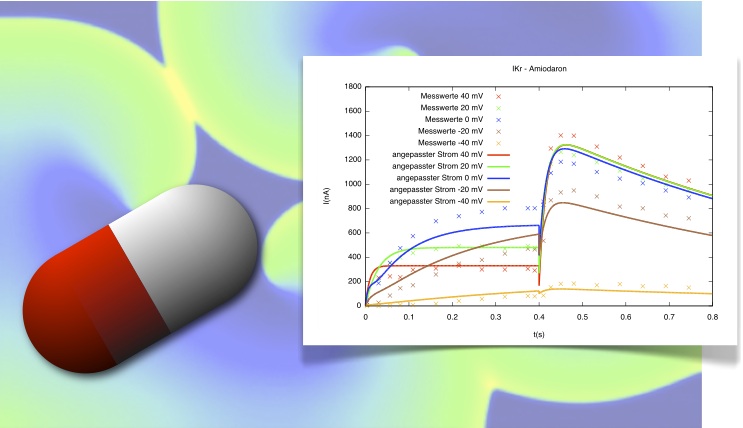Specific Antiarrhythmic Therapy for Familial Atrial Fibrillation in a Numerical Model of Human Atrial Electrophysiology
- Typ:Bachelorarbeit
- Betreuung:
Dr.-Ing. Gunnar Seemann, Dipl.-Ing. Mathias Wilhelms, M.Sc. Axel Loewe
- Bearbeitung:
-
Atrial fibrillation (AF) is the most common cardiac arrhythmia affecting approximately 1% of the population. In general, AF is associated with other cardiac diseases, such as congestive heart failure. However, some patients do not suffer from these comorbidities. Instead, mutations of specific genes have been observed and are supposed to predispose those patients to AF (“familial AF”). Several anti-arrhythmic agents, which are used in treatment of AF, exist. However, the efficacy of these drugs can still be improved – particularly with respect to familial AF. Therefore, the mechanisms of action of these agents have to be better understood and still can be optimized.
The aim of this work is to integrate the effects of amiodarone and dronedarone – two common anti-arrhythmic drugs - into a model of atrial electrophysiology. Their impact on physiological atrial myocytes, as well as myocytes affected by several mutations shall be investigated.
Furthermore, an ideal drug for each mutation shall be identified in terms of reverting electrophysiological parameters to their physiological values on the cellular and tissue level. For this purpose, an appropriate optimization algorithm needs to be designed and implemented.
Finally, a comparison of the pharmacological agents and their impact on healthy and mutated tissue shall be carried out.


